Experience Gwalior the royal way with Deo Bagh

There’s something about Gwalior that enchants you. Of course, it’s historic and has some of the finest architectural attractions from the bygone era. But, there’s something subtle about Gwalior that intrigues you and makes you want to explore it. Since the city has such rich history behind it, experiencing it through a heritage property is the foregone conclusion. Therefore, I chose to stay at Neemrana Hotels’ Deo Bagh, an award winning property.



Why should you visit Gwalior?
I wonder why Gwalior is not on everyone’s wish-list like other historic cities. Anyway, I guess it’s a good thing. I’d say Gwalior is one of the alternative travel destinations in India for those who seek heritage, history and beautiful landscapes.
The magnificent Gwalior Fort
The first site that you should visit in Gwalior is the Gwalior Fort for its awe-inspiring structure and grandeur. It reminded me of Mehrangarh Fort of Jodhpur (Rajasthan). The fort has several ancient temples and carved structures within its high walls. The most spectacular part of the visit is taking in the overview of the entire city of Gwalior and the surrounding hills from the fort.
Make sure you have enough time to spend at the fort, because it’s really huge. And, don’t visit it on a Sunday. It’s thronged by the locals on a weekend or a holiday. So, plan to visit it on a weekday early in the morning or late afternoon to be able to make the most of it.
The divine, European-style Jai Vilas Palace
Another impressive old building that I visited was the Jai Vilas Palace, which was built in 1874 by Maharajadhiraj Shrimant Jayajirao Scindia Alijah Bahadur, the Maharaja of Gwalior. While the major part of the palace is now open to the public as a museum, a part of it is still the home of the posterities from the Maratha Scindia family.
Interestingly, I visited the backyard of the palace, where I found the squad of white duck crooning their morning number. I have to say that the white exterior of the palace looks quite divine, which is reminiscent of European architecture.


The beautiful Teli Ka Mandir
Although there are quite a few significant temples to visit in Gwalior, the one you should definitely visit is Teli Ka Mandir. It’s famous for its height (100 ft) and history – it was used to process oil before the British seized Gwalior. The temple is in close proximity to the Gwalior Fort, and you need to buy only one ticket to visit all the attractions around the fort – the Saasbahu Temple and others.

The vintage Maharaj Bada
I’m usually fascinated with beautiful streets and squares, and Maharaj Bada aka Jayaaji Chowk in Gwalior is one such place. The square has some of the most eminent British era buildings, which have been converted into Govt. offices. Besides, the square also has a garden in the middle with Maharaj Jiyaji Rao’s statue. Sadly, the square and the streets are full of garbage, which ruins the historic charm of the place. I really hope the Swachh Bharat campaign is implemented here soon.

The tomb of Tansen
You should definitely visit the tomb of the legendary musician Tansen in Gwalior. There’s another tomb in the same vicinity, which is of his Sufi master Muhammad Ghaus. I made the visit in the morning when the park is used by the locals for walking, exercising and meditating. It’s a lovely park with the two eminent tombs.
You can also attend the Tansen music festival, which is held every year in December.
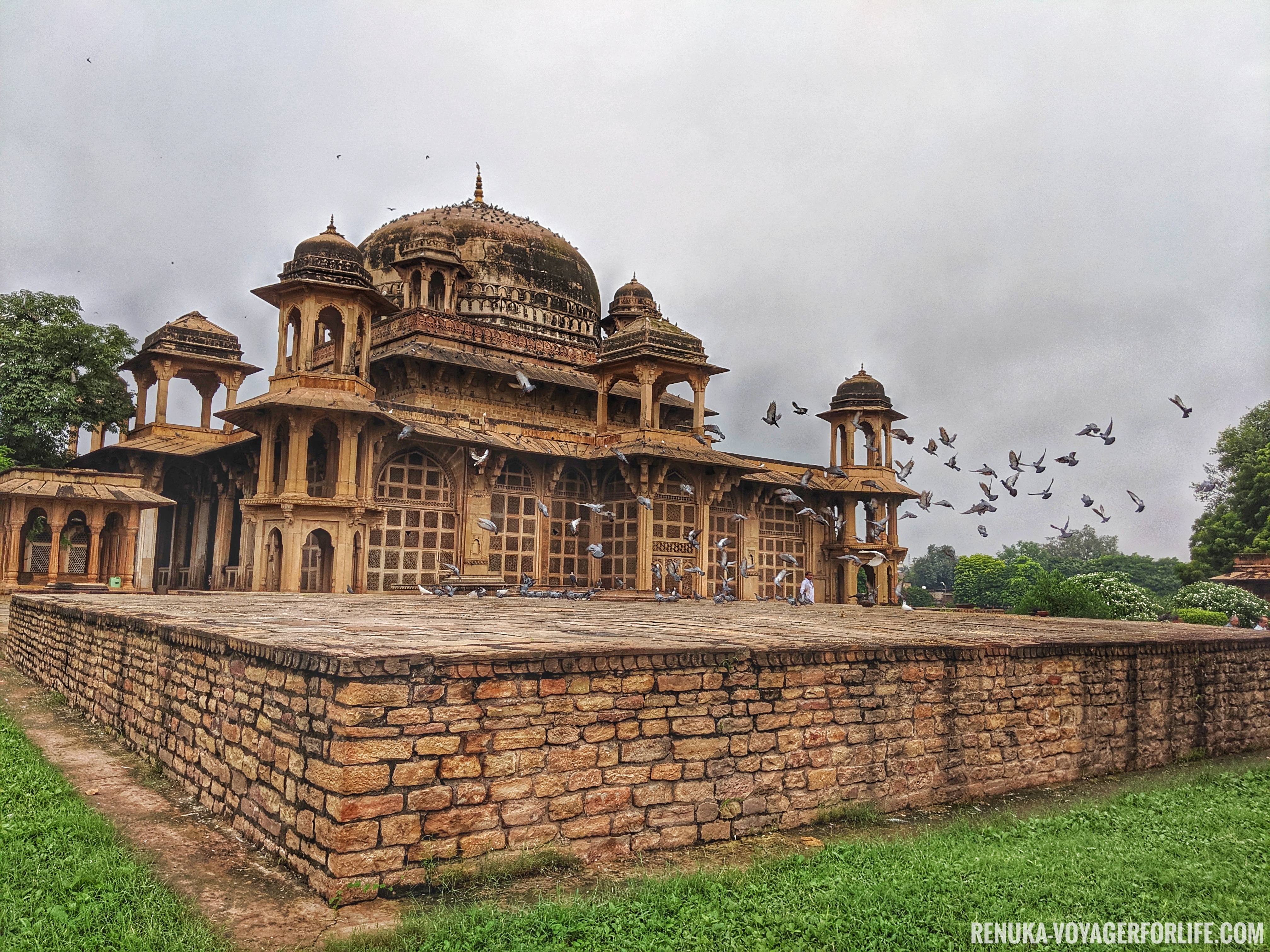

The charming Moti Mahal
Moti Mahal Road in Lashkar, the old Gwalior, is also a lovely place for strolling and admiring the old architecture and aura. Moti Mahal, the palace, was once the secretariat of Madhya Bharat Government. Now it’s a museum open for public. But, I simply loved wandering around it. There’s a beautiful pond across the building, where you can just sit for a while and enjoy the vibe around.

The vivid lanes and markets of Gwalior
More than the famous sites of Gwalior, you should care about exploring the lanes and markets of Gwalior. The vivid doors, the old alleyways, the withered balconies and porticoes of Gwalior bask in their ‘unassuming’ glory.
Even though you are not fond of shopping, you must check out at least a few markets of Gwalior like Bada Bazaar, Sarafa Bazaar, Nazarbagh Market, Victoria market, Topi Bazaar and Dal Bazaar for the atmosphere they exude. And, if you like, you can pick up some lovely handicrafts or Chanderi silk sarees as souvenirs.


The heritage schools of Gwalior
Gwalior is also renowned for its schools, which have regal connections, such as the Scindia School, which was initially established only for noble families, particularly the Marathas. Then there’s the British-era Victoria College, now known as Maharani Laxmi Bai College, where our former PM Atal Bihari Vajpai gained his education. These schools look grand and they speak volumes about Gwalior’s glorious past.

The famous food joints of Gwalior
When you are in Gwalior, you have to binge on its famous local delicacies, such as Gajak, Bedai, Kachori, Samosa, Poha, Paratha, Jalebi and Gulab Jamun. The special part about the cuisine of Gwalior is that most of the dishes are prepared with pure ghee. You must visit places like Agrawal Puri Bhandar, SS Kachoriwala, Bahadura sweets, and Morena Gajak Bhandar.
Also read: The Food Stories Of Raipur
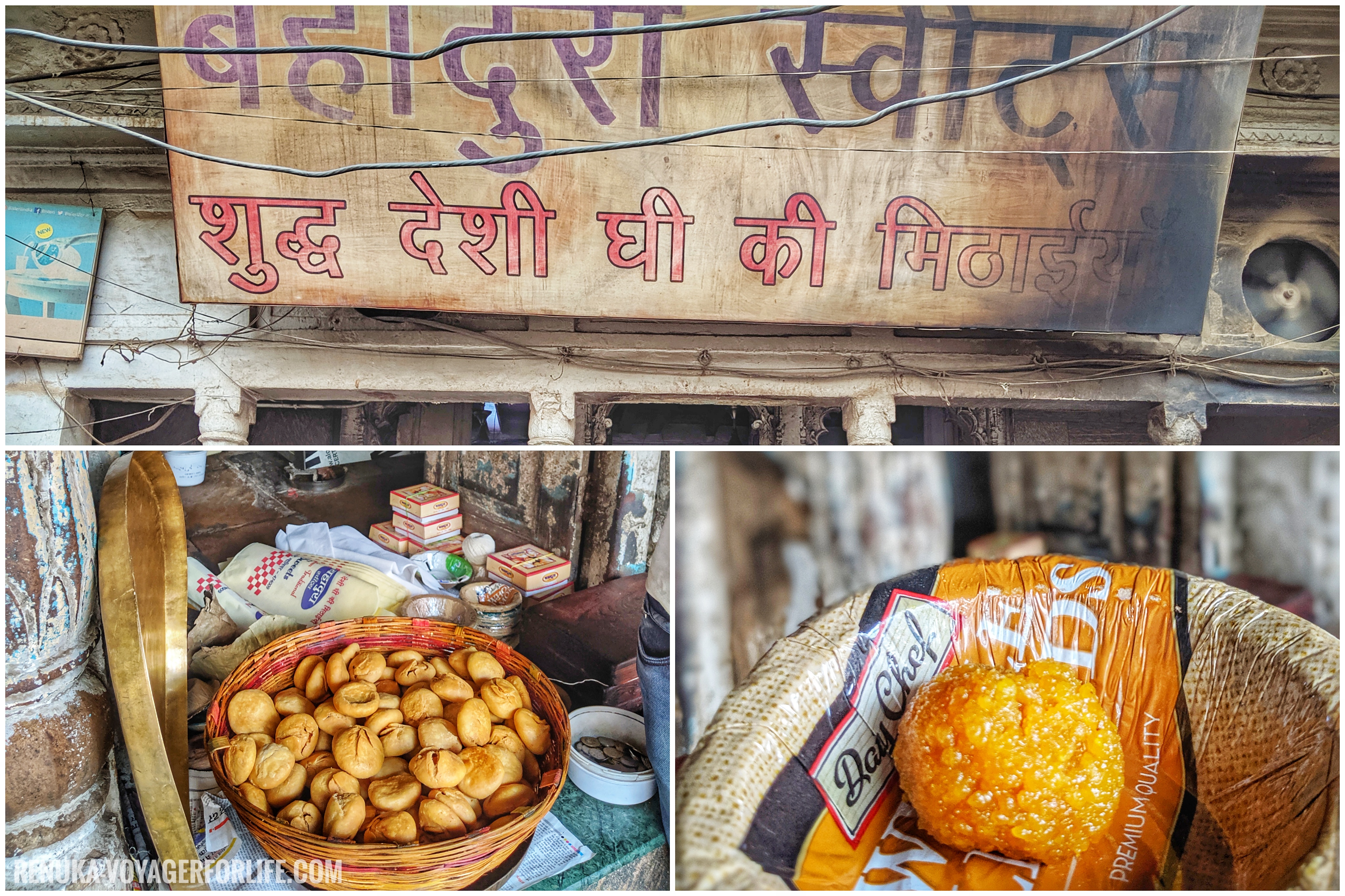
So yes, there’s a lot to do and explore in Gwalior. And, the best place to stay in Gwalior is Deo Bagh.
Deo Bagh – the perfect abode to experience the royalty and the heritage of Gwalior
Deo Bagh holds the essence of Gwalior
There’s an unusual charm about staying at a property, which has stories from the 17th century. According to history, Sardar Deorao Bhausaheb Jadhav and his son Sardar Krishnarao Deorao Jadhav converted the chhattis-dari (36-pillared pavilion) into a summer house, and that’s how Deo Bagh came into being. Thus, staying at Deo Bagh makes your experience of exploring Gwalior even more remarkable. It makes you step back in time and revel in the glories and mysteries of the past.

The ancient in-house temples at Deo Bagh
The charm of staying at Deo Bagh doesn’t end at its historic significance. What I truly found amazing and unique about the property was the complex of ancient family temples within the premises of the hotel. The temples at the property are nowhere in the heritage listings of Gwalior, but they are so beautiful.
The temple complex at Deo Bagh is beautifully set in the midst of trees and wild lushness, which makes it even more stunning. Also, you can wake up early, around 4:30 am to watch the ritual performed by the pujari, who visits the temples every day.
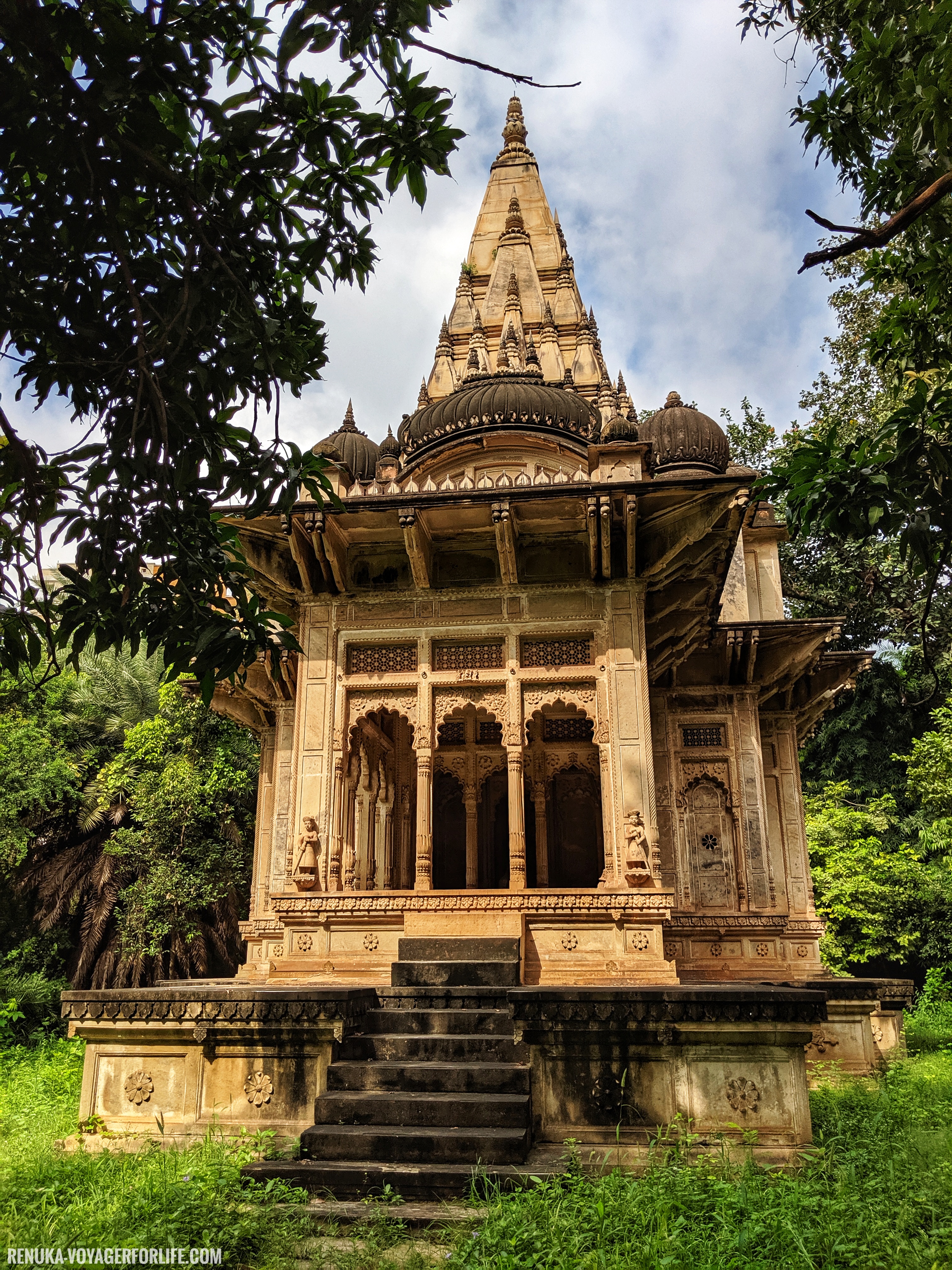
Beautiful regal-era rooms and porticoes
Staying at Deo Bagh is a true-blue regal experience for the way each room has been designed and built. There are a couple of old suites and rooms, which are part of the old wing. The set of new rooms overlook the beautiful garden.
I stayed at Dhanur Mahal, which is part of the old building – it also has one smaller room attached to the bathroom apart from the master room. Then I also stayed at Jankoji Mahal, which is part of the new wing. The room has two entrances – one from the backside and the other one from the portico.
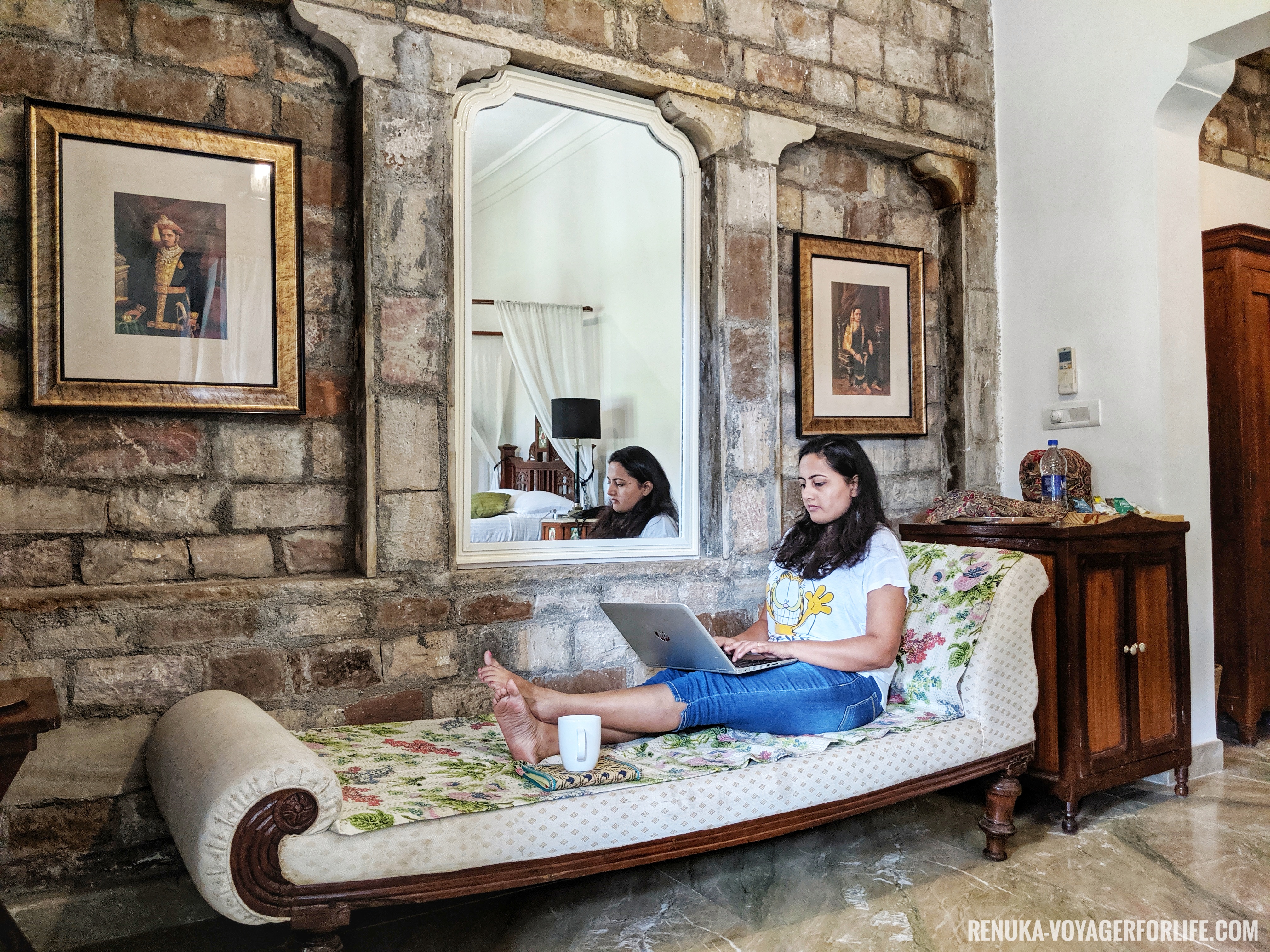


Peacocks prance around to keep you company
The highlight of Deo Bagh is the sight of peacocks. Yes, they are your constant companions, but from a distance. It’s such an amazing experience to relax in the garden, or enjoy a cup of tea in the portico while a peacock or two would appear.

Royal dining experiences
I can never forget my dining experiences at Deo Bagh. Food is so delicious. And, the Chef Pramod Kumar was kind enough to prepare local Maratha dishes for me – Bharbat Mutton, Gola Bhat, Bharli Vangi (Stuffed Brinjal), Kadai Bhindi and Mandodari Dal. I still have the taste of each dish in my mouth.
But, the best part about dining was the breakfast at Baradari – the royal cenotaph in the middle of the property surrounded by the verdant beauty of nature. I’ve to admit that I felt like a queen.

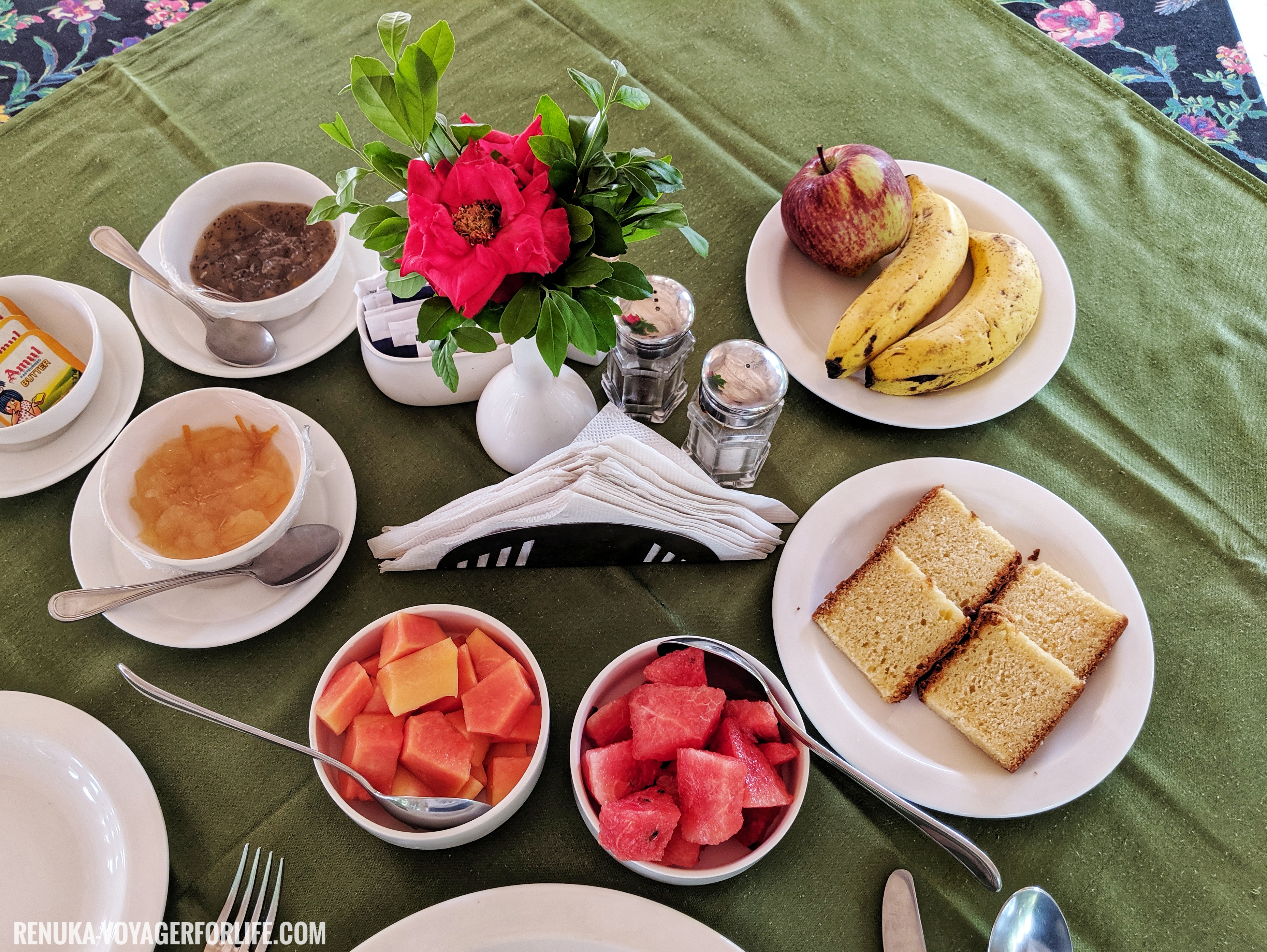
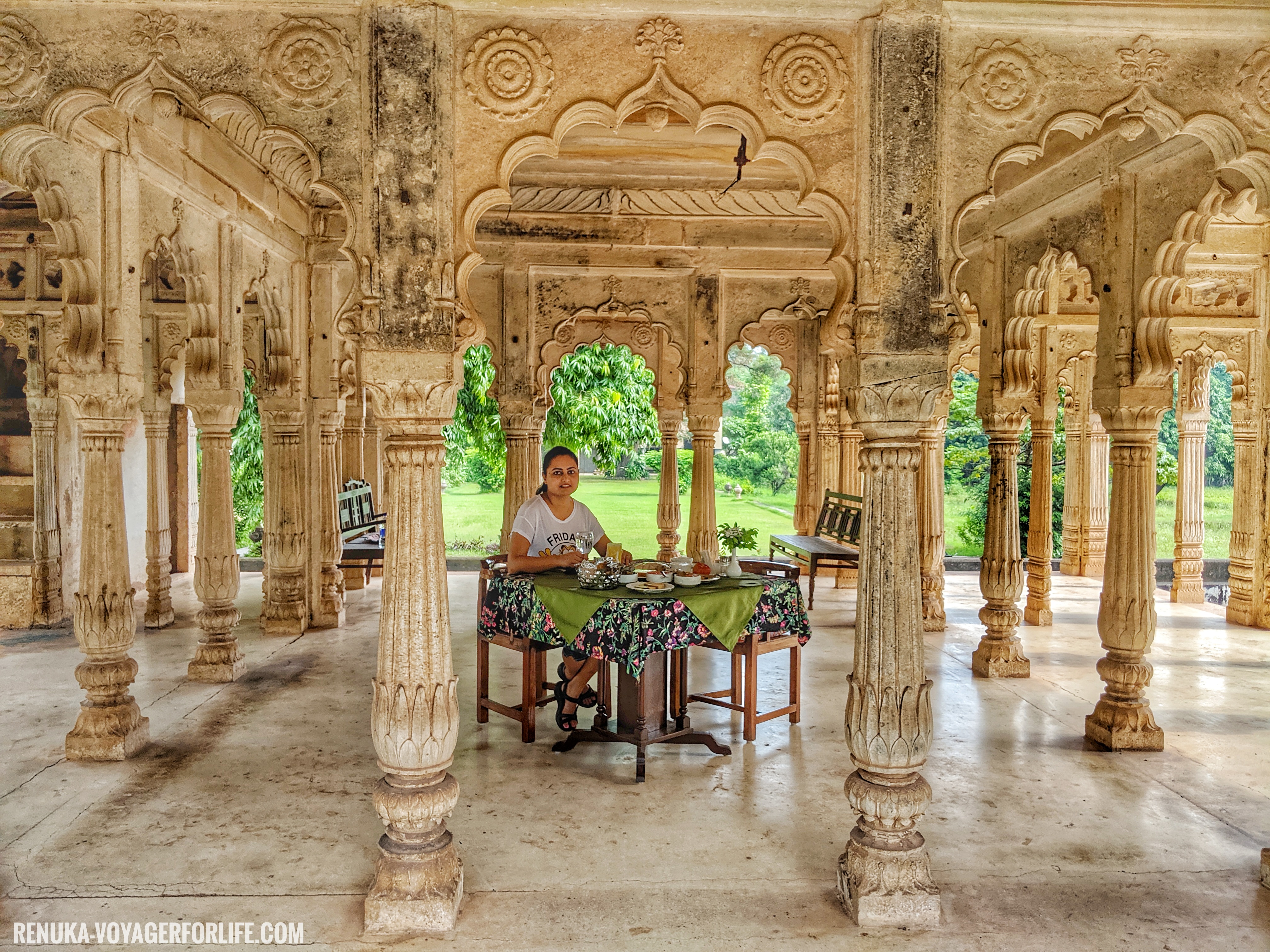
I thank the team of Deo Bagh, especially the manager, Narayan, for making the experience of staying at Deo Bagh and exploring Gwalior so memorable for me.
How to reach Gwalior: There are several trains between Delhi and Gwalior. I traveled by Gatiman Express, which takes 3 hours to reach Gwalior.
Note: I visited Deo Bagh in collaboration with Neemrana Hotels. However, as always, all opinions and photos are my own.
Would you try Gwalior?
Enjoyed this post? Subscribe to receive ‘new posts’ straight in your inbox!